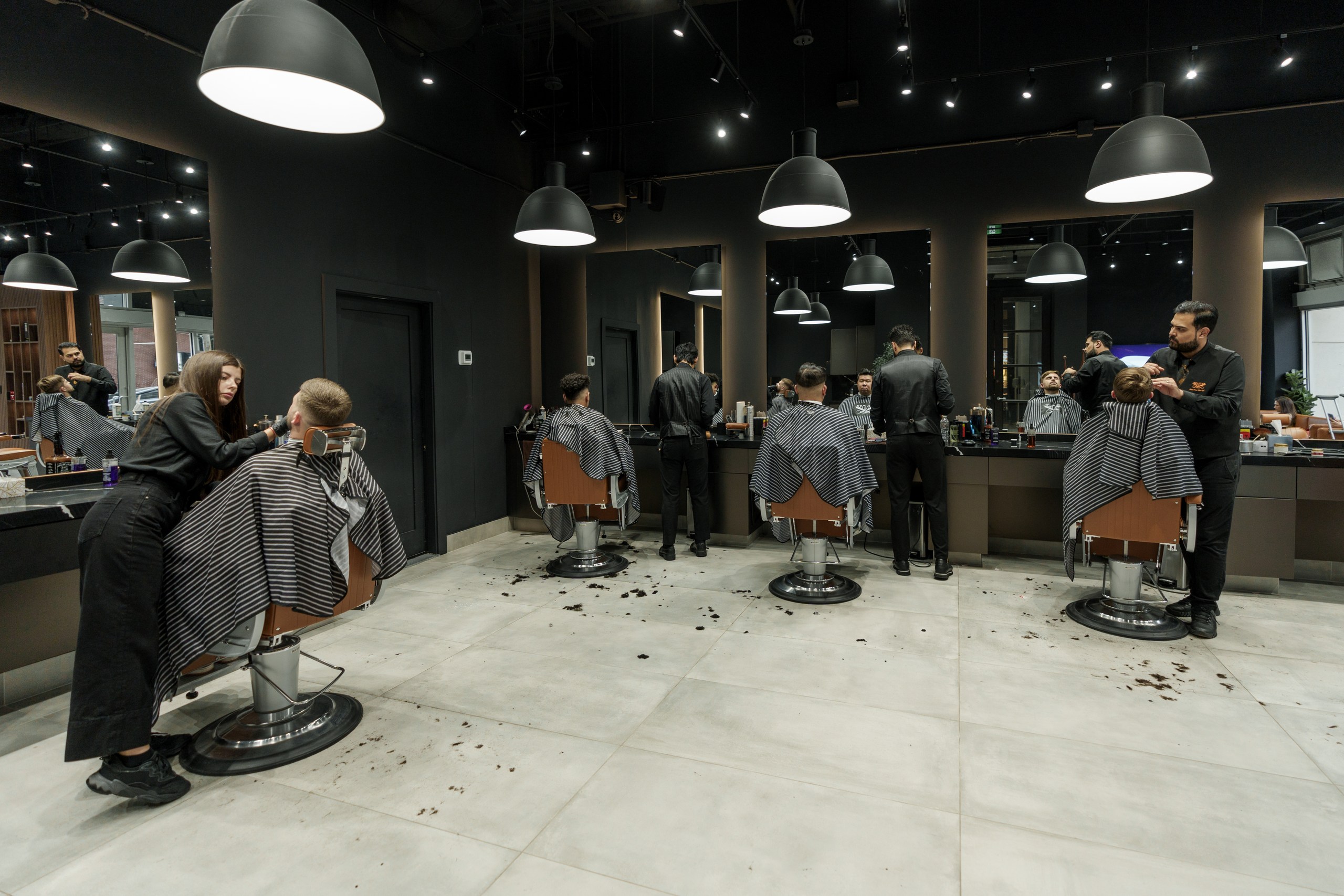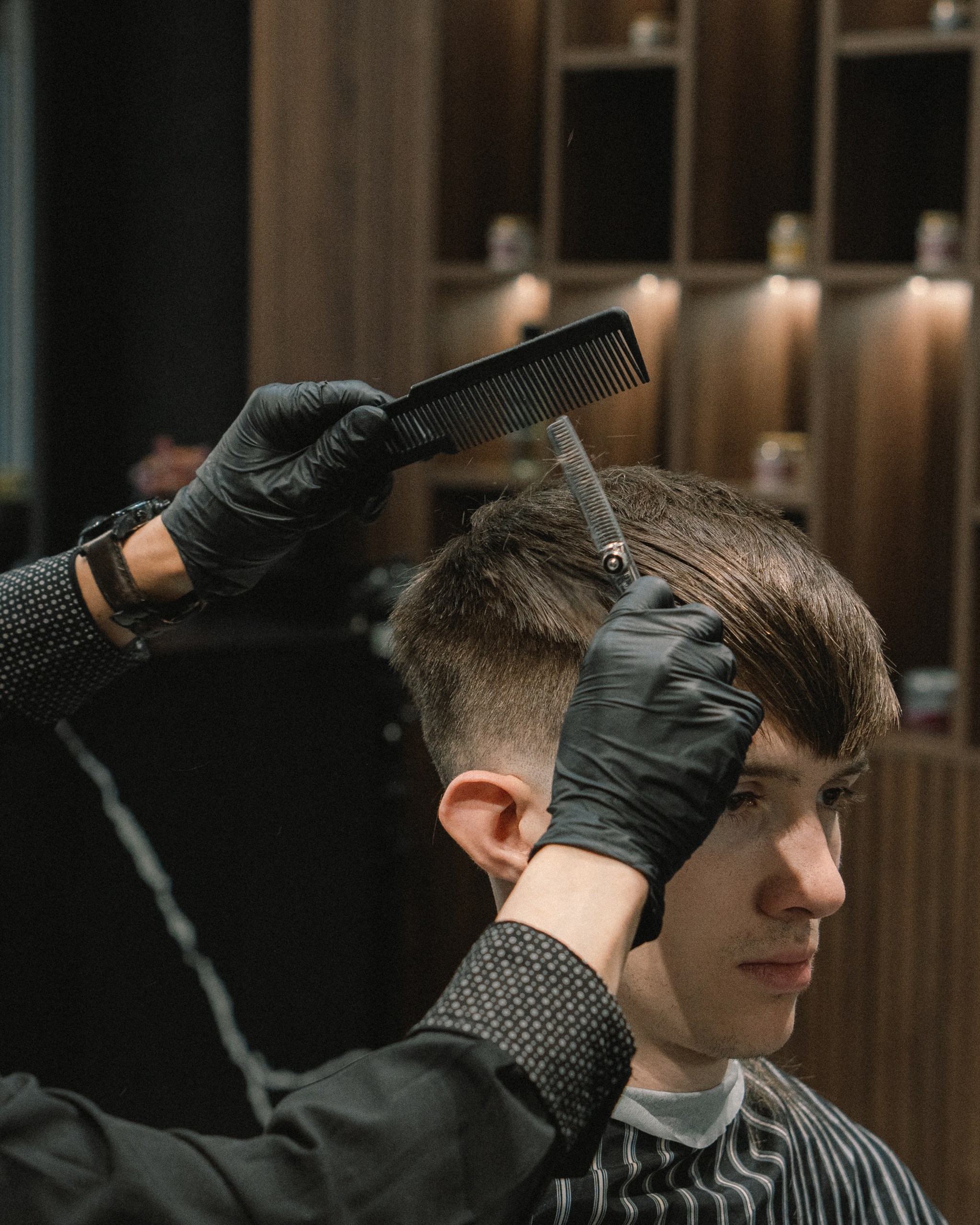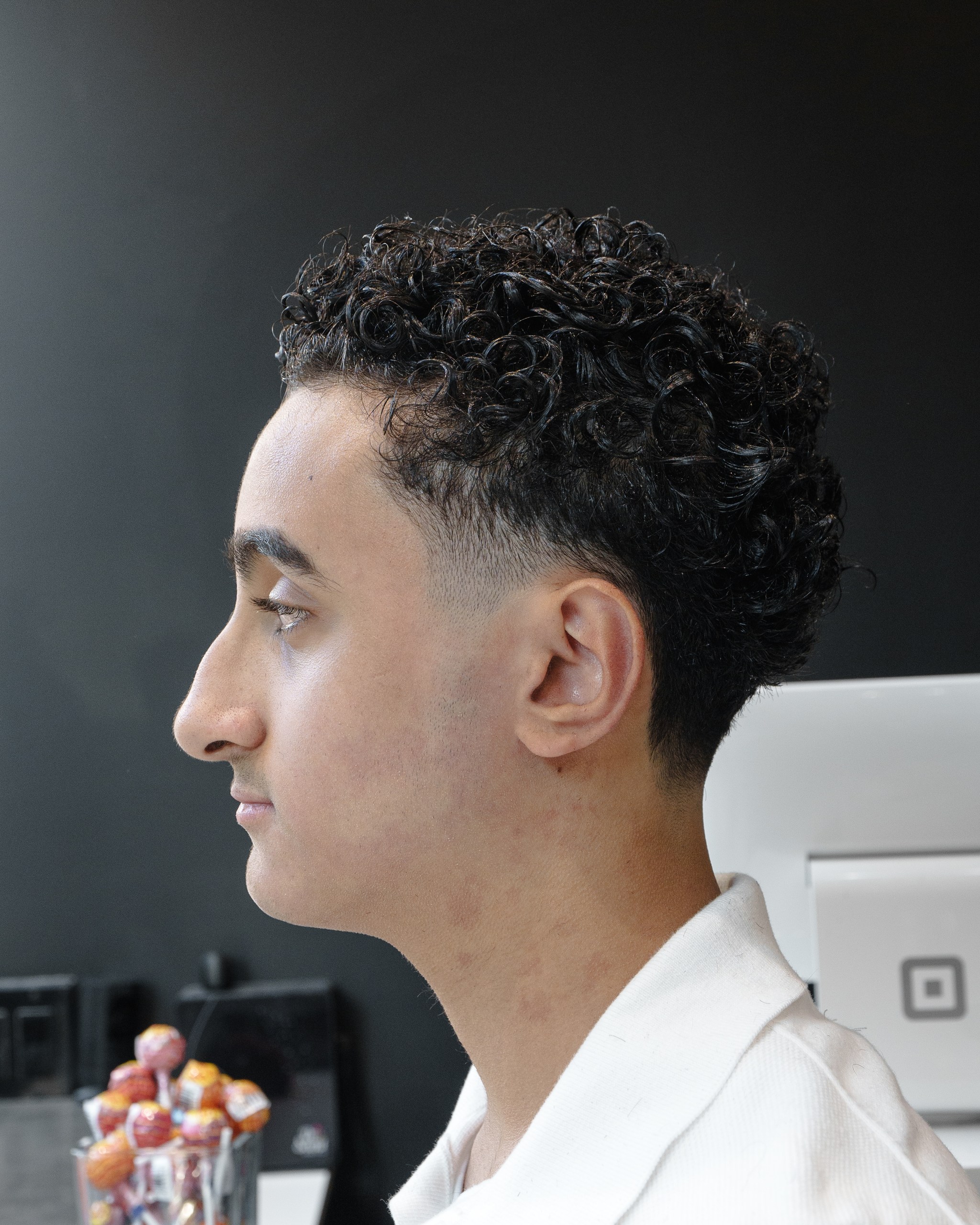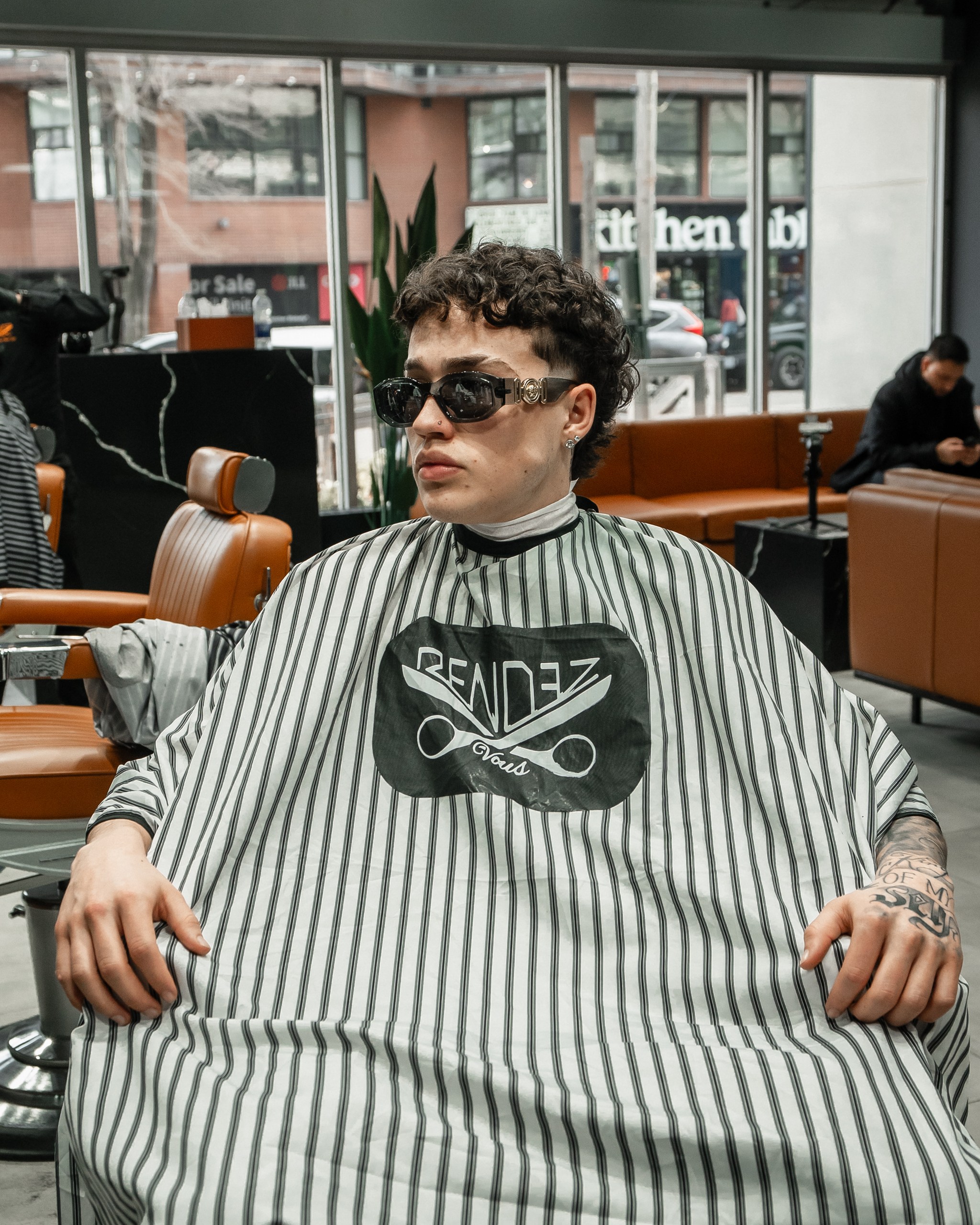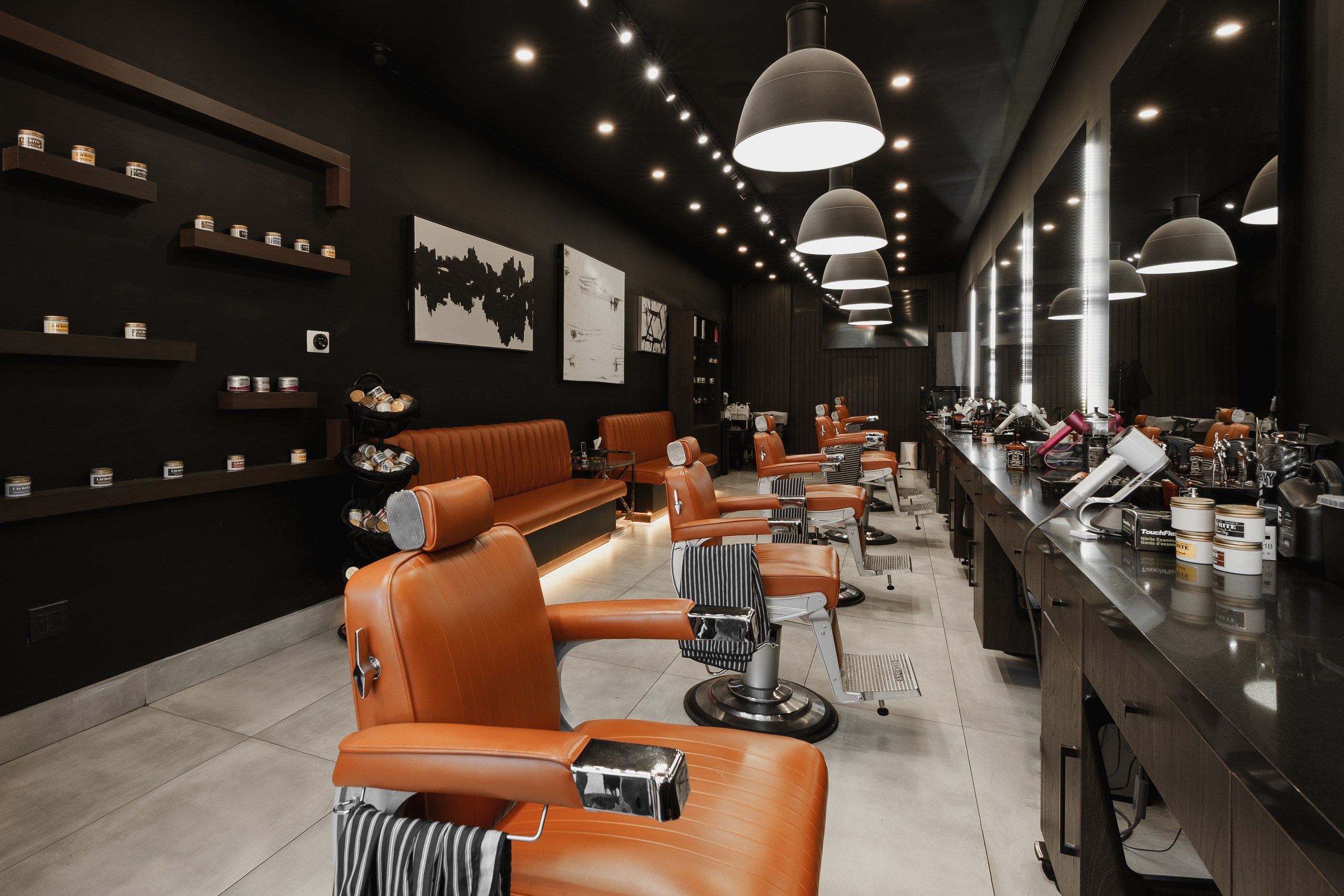The barbering industry has operated under an unspoken assumption for decades: men cut men's hair. This division seemed natural to many – barbershops for men with male barbers, salons for women with female stylists. The logic appeared straightforward until you actually examined it and realized it was based on tradition rather than any real skill differential.
At Rendezvous Barbers, we've watched Toronto's barbering landscape evolve significantly over the past decade. Women who would have been automatically steered toward cosmetology schools are now choosing barbering programs, mastering fades and straight razor work, and building client bases that respect their technical skills rather than questioning their presence.
The reality is that barbering skill comes down to training, practice, and natural aptitude – none of which correlate with gender. Understanding why women have been underrepresented in barbering and how that's changing helps explain broader shifts in Toronto's grooming industry.
The Historical Division
The separation between barbering and cosmetology wasn't always as rigid as it became in the 20th century. Historically, barbers performed various services including surgery, dentistry, and bloodletting alongside haircuts and shaves. As medicine professionalized, barbering narrowed its focus to hair and grooming services.
The gendered division that followed had more to do with social conventions than practical differences. As barbershops became male social spaces, the assumption developed that men should cut men's hair and women should cut women's hair. This created separate licensing tracks and training programs that reinforced the division.
In Ontario, barber and hairstylist licenses are separate credentials with different training requirements. Barber programs focus heavily on clippers, fades, straight razor work, and beard grooming – techniques traditionally associated with men's grooming. Cosmetology programs emphasize longer hair techniques, chemical processing, and styling methods more commonly used in women's salons.
This licensing separation created a practical barrier for women interested in barbering. Even if they wanted to pursue that path, the cultural assumption was that women belonged in salons, not barbershops. Many were actively discouraged from barbering programs or told they'd struggle to find work in the field.
Technical Skills and Gender
The actual work of barbering requires specific technical skills that have no inherent connection to the barber's gender. Executing a clean fade demands understanding of clipper techniques, guard blending, and visual precision. Straight razor work requires steady hands and proper angle control. These are learned skills that develop through practice and instruction.
Some of Toronto's most technically proficient barbers are women who've mastered these techniques through the same training and practice as their male counterparts. The ability to create smooth gradients in a fade or execute precise lineup work doesn't correlate with the barber's gender – it correlates with their training quality and hours of practice.
Client communication and consultation skills matter as much as technical execution. Understanding what a client wants, translating their description into a feasible cut, and managing expectations requires interpersonal skills that again have no gender correlation.
Physical stamina for standing all day and repetitive hand movements affects all barbers regardless of gender. The physical demands of barbering are real but don't create gender-based limitations.
Client Perceptions and Biases
The most significant challenges women barbers face often come from client assumptions rather than actual skill differences. Some potential clients walk into shops, see a woman barber, and immediately assume she can't execute men's cuts properly.
This bias operates on multiple levels. Some men feel uncomfortable with women providing personal grooming services, particularly when it involves close physical proximity during shaves or beard trims. Others simply can't mentally reconcile "barber" with "woman" because the association between barbering and masculinity is so deeply ingrained.
These biases create real business impacts. A male client who refuses service from a woman barber costs that barber income and advancement opportunities. When this happens repeatedly, it can discourage women from pursuing or continuing in the field.
However, client perceptions shift dramatically once they actually experience quality service from women barbers. Many guys who initially requested male barbers became regular clients of women barbers after seeing the technical quality of their work. The bias often collapses when confronted with actual results.
Toronto's increasingly diverse population has helped normalize women barbers faster than in more homogeneous markets. Clients from cultures where women commonly cut men's hair bring different expectations that help break down traditional assumptions.
Shop Culture and Workplace Dynamics
Barbershop culture has historically been built around male spaces and male social dynamics. This creates both obvious and subtle challenges for women entering the field.
The most successful shops have adapted their culture to be genuinely inclusive rather than just tolerating women barbers as exceptions. This means addressing inappropriate comments, ensuring equal access to training and advancement opportunities, and creating environments where skill matters more than gender.
Some women barbers report that shop dynamics improve with their presence – the atmosphere becomes more professional and less likely to veer into inappropriate territory when women are part of the team. This benefits everyone by maintaining higher professional standards.
However, tokenism remains a real issue. Being the only woman barber in a shop creates pressure to represent all women barbers rather than just being an individual professional. It can also create isolation when social dynamics default to male-centric conversation and interaction patterns.
Training and Advancement Paths
Women entering barbering programs often face different dynamics than male students. Instructors' assumptions, peer interactions, and practical training experiences can vary based on student gender in ways that affect learning and confidence development.
Some women report being pushed harder to prove themselves in training, with instructors scrutinizing their work more carefully than male students' work. While this can be frustrating, it can also result in more rigorous skill development.
Apprenticeship opportunities can be harder for women to secure as some established barbers hesitate to take on female apprentices due to their own biases or concerns about shop dynamics.
However, Toronto's larger, more progressive shops increasingly recognize that hiring based on skill rather than gender improves their business. Women barbers bring diverse perspectives and attract clientele who specifically seek them out.

Building Clientele
Women barbers often need to work harder initially to build client bases because they can't rely on the automatic assumption that they're competent. This requires stronger portfolios, more aggressive social media presence, and often lower initial pricing to get guys willing to try their services.
Once established, many women barbers find their gender becomes an asset rather than a liability. Some clients specifically prefer women barbers for various reasons – perceived attention to detail, different communication styles, or simply wanting to support women in non-traditional fields.
Social media has been particularly valuable for women barbers to showcase technical skills and attract clients based on demonstrated ability rather than gender-based assumptions. Before-and-after photos of quality fades and lineups speak louder than any explanation about why gender doesn't matter.
Word-of-mouth referrals become especially important for women barbers. One satisfied client can bring multiple referrals once he's validated that gender doesn't correlate with quality.
The Business Reality
From a business perspective, gender diversity in barbershops makes sense. Women clients who prefer shorter, more structured cuts often feel more comfortable with women barbers. LGBTQ+ clients may also prefer diverse shop environments.
Shops that hire based on skill rather than gender gain access to a larger talent pool and can choose the best barbers available rather than limiting themselves to male candidates.
The marketing advantage of showcasing diverse teams resonates with Toronto's progressive culture. Shops that appear inclusive attract clients who value those principles.
What's Changing
Toronto's barbering industry is gradually shifting toward merit-based assessment of barbers regardless of gender. Several factors are driving this change.
Younger generations entering the industry and using barbering services carry fewer gender-based assumptions about who can cut hair effectively. This generational shift is accelerating cultural change.
Increased visibility of successful women barbers through social media demonstrates technical competence in ways that were harder to showcase previously.
Progressive shop owners who prioritize skill and business performance over traditional assumptions are proving that diverse teams work effectively.
Educational institutions are seeing increased enrollment of women in barbering programs, creating a larger pipeline of qualified women barbers entering the field.
Moving Forward
The path forward involves both individual and systemic changes. Women considering barbering careers should focus on developing strong technical skills and building portfolios that showcase their abilities.
Shop owners who want to hire the best barbers need to actively recruit women candidates and create inclusive cultures where they can succeed.
Clients should evaluate barbers based on their demonstrated work rather than gender-based assumptions. Trying services from women barbers often reveals that quality has nothing to do with the barber's gender.
The industry overall benefits from welcoming talented individuals regardless of gender, expanding the available talent pool and creating more diverse, inclusive spaces.
Conclusion
Women in barbering face real challenges rooted in historical assumptions and cultural biases, but these barriers are breaking down as demonstrated skill trumps outdated expectations. The best barbers are the ones with superior technical skills and client service abilities, regardless of their gender.
Toronto's barbering industry is evolving toward merit-based assessment that benefits everyone – women barbers gain opportunities, shops access better talent, and clients receive quality service from the most skilled professionals available.
Book your appointment today and judge your barber based on what actually matters – the quality of your cut and the professionalism of your service. For barbering that prioritizes skill over assumptions, visit Rendezvous Barbers.


